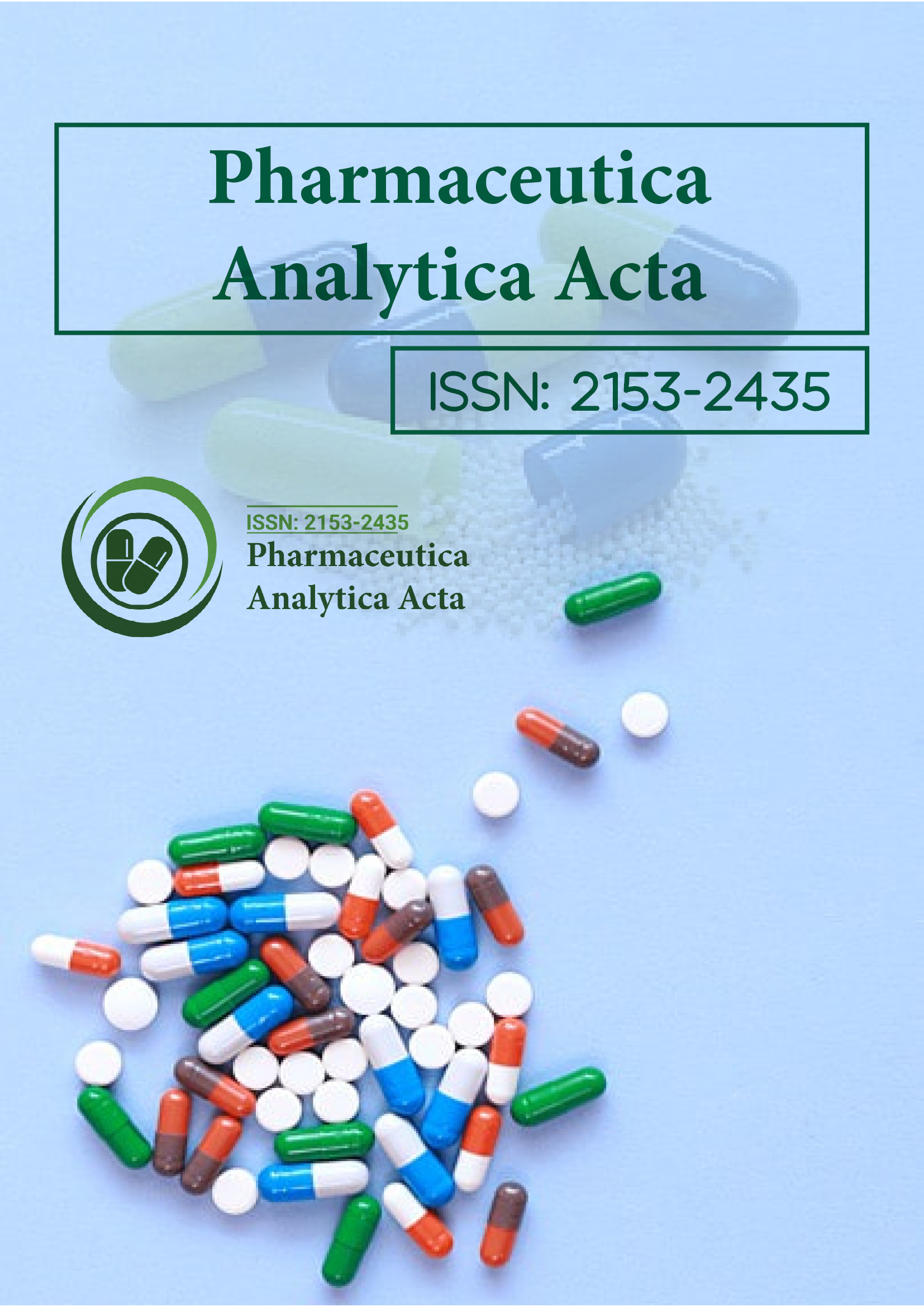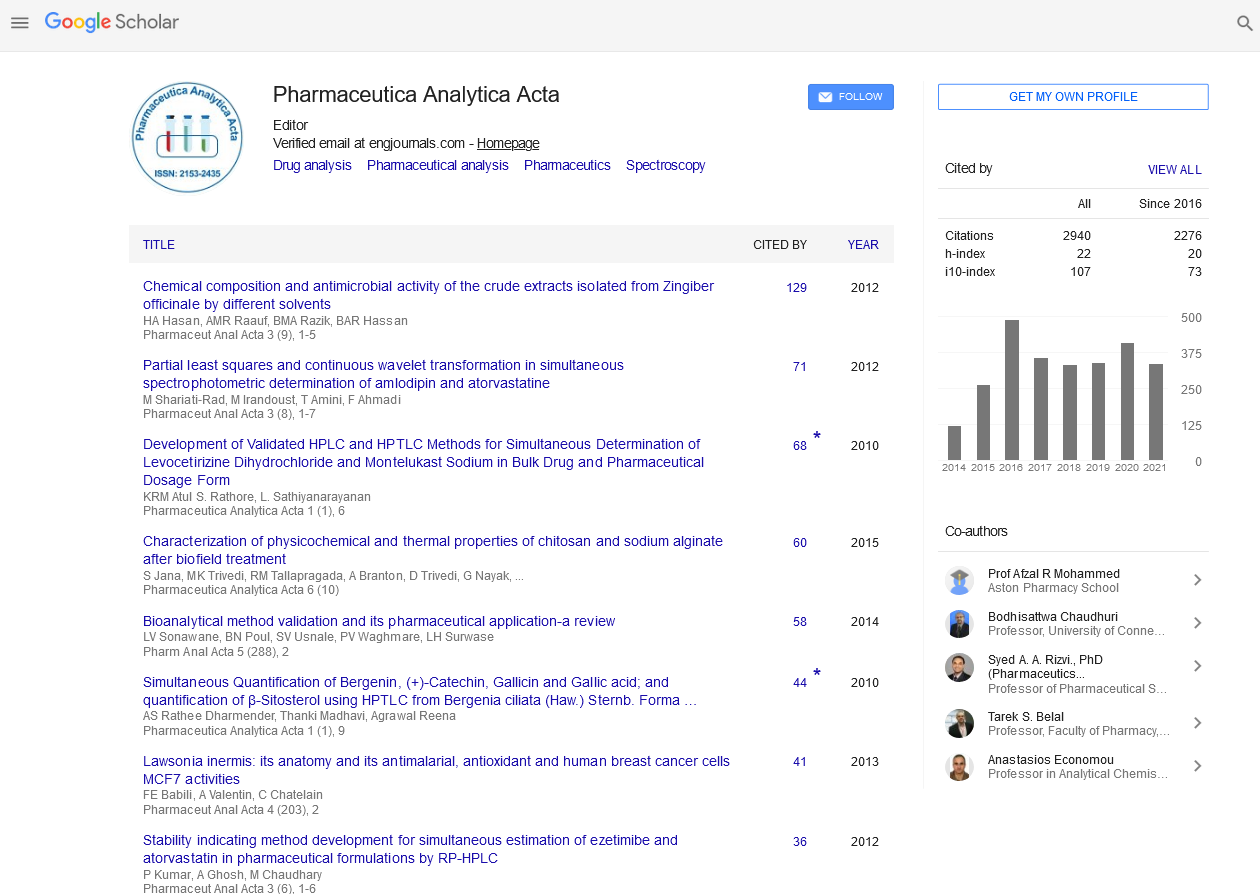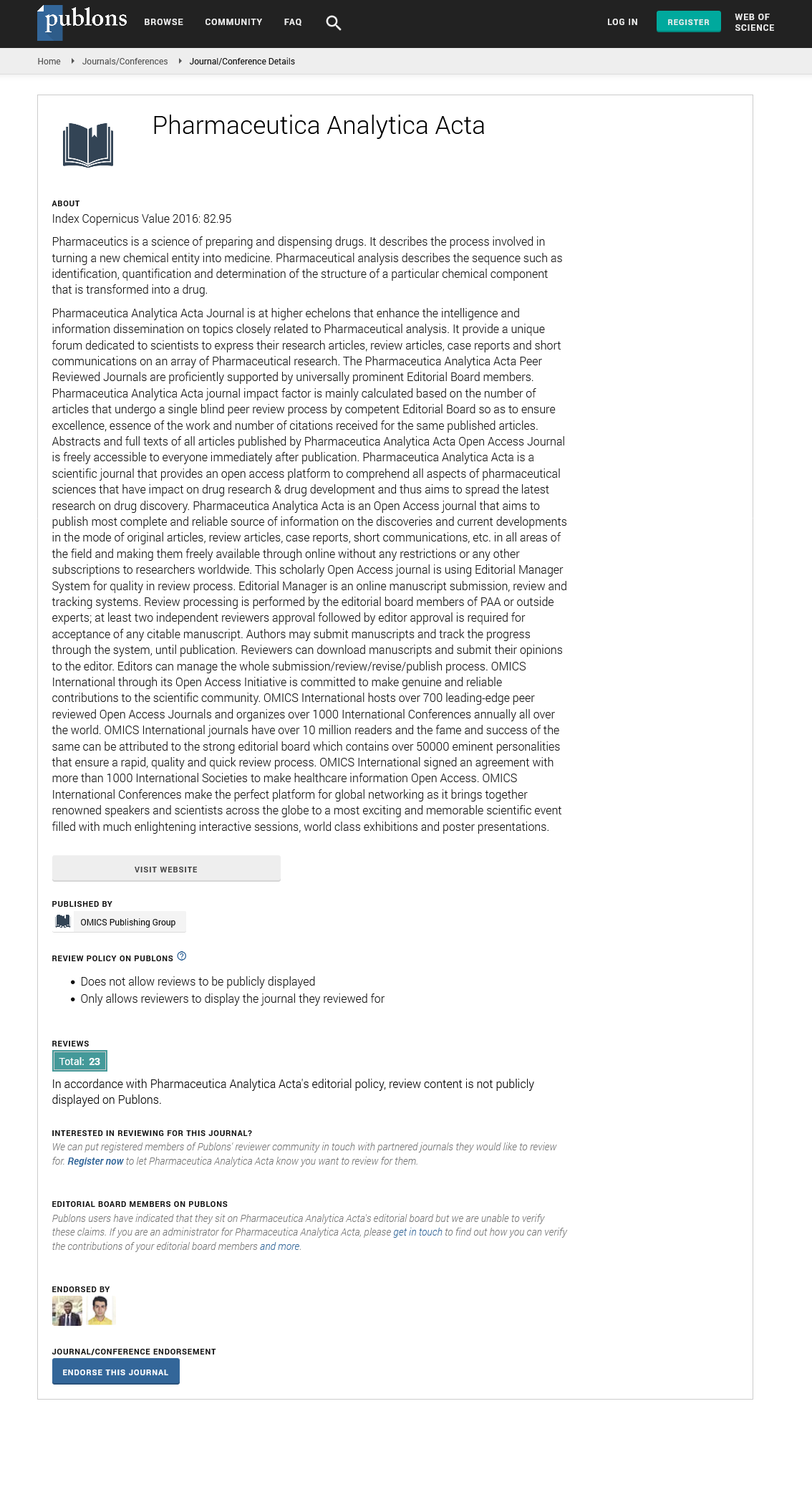Indexed In
- Open J Gate
- Genamics JournalSeek
- Academic Keys
- JournalTOCs
- The Global Impact Factor (GIF)
- China National Knowledge Infrastructure (CNKI)
- Ulrich's Periodicals Directory
- RefSeek
- Hamdard University
- EBSCO A-Z
- OCLC- WorldCat
- Publons
- Geneva Foundation for Medical Education and Research
- Euro Pub
- Google Scholar
Useful Links
Share This Page
Journal Flyer

Open Access Journals
- Agri and Aquaculture
- Biochemistry
- Bioinformatics & Systems Biology
- Business & Management
- Chemistry
- Clinical Sciences
- Engineering
- Food & Nutrition
- General Science
- Genetics & Molecular Biology
- Immunology & Microbiology
- Medical Sciences
- Neuroscience & Psychology
- Nursing & Health Care
- Pharmaceutical Sciences
Commentary - (2023) Volume 14, Issue 5
Revolutionizing Pharmacokinetics and Drug Design: A Comprehensive Overview
Marcga Parto*Received: 25-Sep-2023, Manuscript No. PAA-23-23714; Editor assigned: 28-Sep-2023, Pre QC No. PAA-23-23714 (PQ); Reviewed: 18-Oct-2023, QC No. PAA-23-23714; Revised: 25-Oct-2023, Manuscript No. PAA-23-23714 (R); Published: 01-Nov-2023, DOI: 10.35248/2153-2435.23.14.751
Description
Pharmacokinetics is a branch of pharmacology that focuses on understanding the fate of drugs within the body. It involves studying the processes of drug absorption, distribution, metabolism, and elimination, often referred to as ADME. Pharmacokinetic modelling and simulation are powerful tools used by researchers and pharmaceutical scientists to gain insights into how drugs behave in the human body.
Pharmacokinetics
Pharmacokinetics is essential for determining the appropriate dosage, dosing intervals, and routes of drug administration to achieve the desired therapeutic effect while minimizing side effects.
Absorption: This is the process by which a drug enters the bloodstream from its site of administration. The rate and extent of absorption can significantly impact a drug's onset of action.
Distribution: Once absorbed, drugs are distributed throughout the body, with some drugs preferentially accumulating in certain tissues. Factors such as protein binding and tissue permeability affect distribution.
Metabolism: The body's metabolic processes can transform drugs into metabolites, which may be active or inactive. The liver is a primary site of drug metabolism, where enzymes play a main role.
Elimination: The body eliminates drugs and their metabolites through various routes, such as renal excretion, hepatic excretion, or biliary excretion. Understanding these processes helps determine drug dosing regimens.
Role of pharmacokinetic modelling and stimulation
Pharmacokinetic modelling and simulation involve the use of mathematical and computational models to describe and predict drug behavior in the body. These tools play a pivotal role in drug development, clinical trials, and personalized medicine. Here's why they are so important:
Optimizing drug dosage: Pharmacokinetic models help establish the appropriate dosage regimens by considering factors like drug concentration in blood and target tissues, patient characteristics, and disease state. This optimization ensures that drugs are both effective and safe.
Reducing drug development costs: Early-phase pharmacokinetic modelling can assist in candidate drug selection and dose- escalation strategies, potentially saving time and resources in drug development.
Enhancing clinical trial design: Simulation enables the design of efficient and informative clinical trials. It helps determine the number of subjects needed, study duration, and sampling times, ultimately leading to more robust data and faster drug approvals.
Understanding drug-drug interactions: Pharmacokinetic models can predict how one drug may affect the pharmacokinetics of another drug when co-administered. This knowledge is just for avoiding adverse interactions in patients taking multiple medications.
Personalized medicine: Customising drug regimens to individual patients is a growing trend. Pharmacokinetic modelling allows for the prediction of drug behavior in specific patients, enabling precision dosing based on genetic, physiological, and clinical factors.
Optimizing therapeutic drug monitoring: For drugs with a narrow therapeutic window or variable pharmacokinetics, therapeutic drug monitoring using modelling and simulation can help maintain drug concentrations within the desired range.
Conclusion
Pharmacokinetic modelling and simulation are indispensable tools in modern pharmacology and drug development. These tools not only enhance our understanding of drug behavior in the body but also enable the optimization of drug dosing, personalized medicine, and the design of efficient clinical trials. As technology and data collection methods continue to advance, pharmacokinetic modelling will play an increasingly prominent role in shaping the future of healthcare.
Citation: Parto M (2023) Revolutionizing Pharmacokinetics and Drug Design: A Comprehensive Overview. Pharm Anal Acta. 14.751.
Copyright: © 2023 Parto M. This is an open-access article distributed under the terms of the Creative Commons Attribution License, which permits unrestricted use, distribution, and reproduction in any medium, provided the original author and source are credited.


